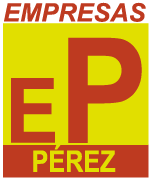A well-planned agenda for meetings is essential for every type of gathering, from a chat with a friend or a large gathering to discuss organizational goals and issues. A well-crafted agenda will keep everyone focused and engaged and improve the efficiency of each participant and the group.
Define the objectives of each item on the agenda. By defining the objective of each item, participants are aware of what to expect from the meeting and can adapt their participation accordingly. Clarity about the goals of meetings helps ensure that the meeting does not alter its purpose and is more likely to be successful.
For each goal, clearly state the way in which the desired outcome will be accomplished. You can state what the objective is: gather information or make a choice, or share information. It could also be a way to describe the process used to accomplish the goal like obtaining consensus or a vote.
Give an estimated time for each agenda item. By providing an estimated time, attendees can prepare for the discussion. They can also alter their participation accordingly. It also lets leaders determine if more time is needed, or if the objective can be achieved in less time.
Include «parking lot» items on the agenda. A parking lot is the perfect place to record thoughts or conversations that are relevant to the topic at hand, but not necessary to be discussed during this meeting. This technique prevents meetings from being derailed by unrelated conversation and can be particularly useful for virtual meetings.

Leave A Comment